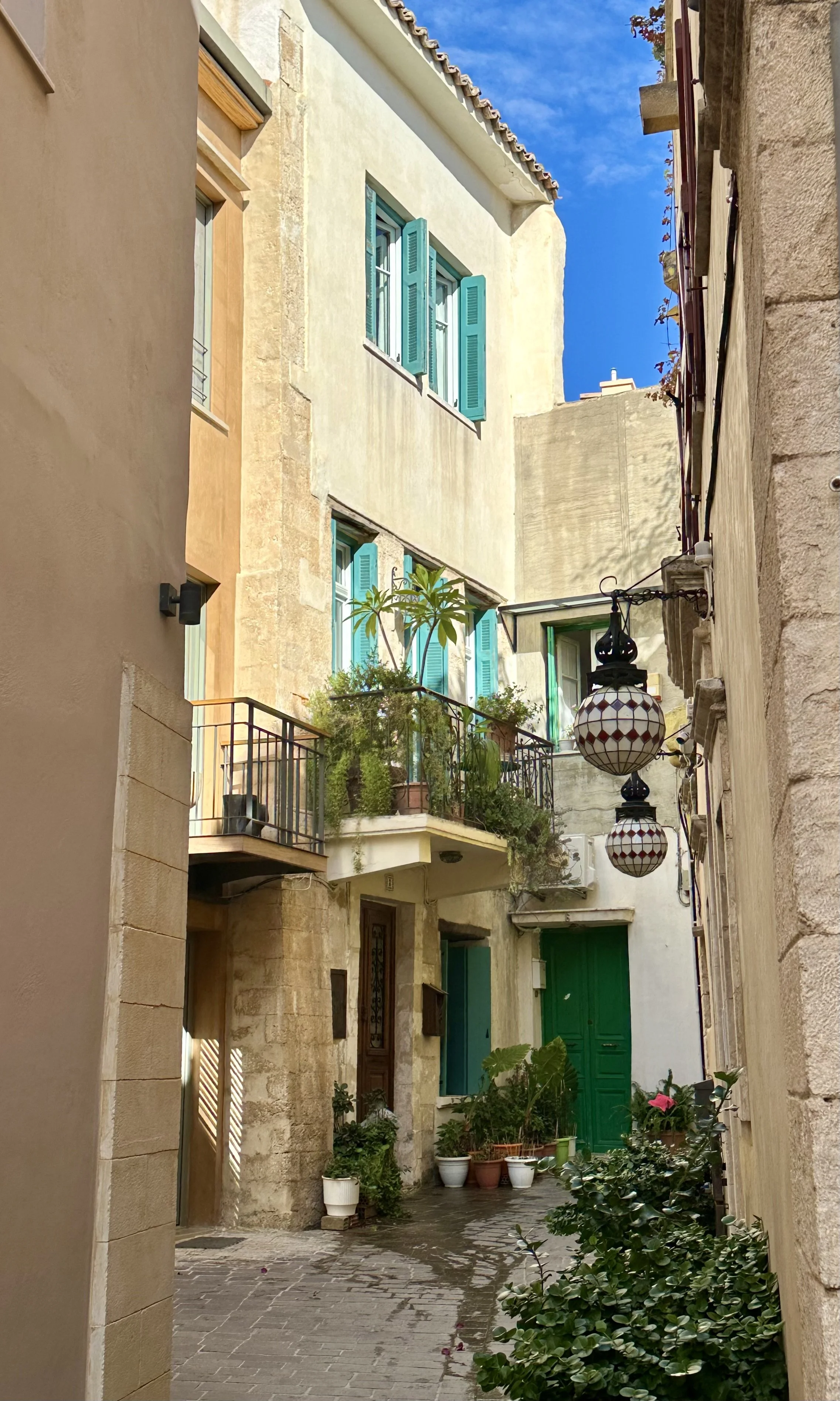Secret Chania
Normally I like to take a walking tour of a new city when we first arrive. But by the time I found and booked “The Local Chania Experience,” we had been in Chania three weeks. It proved to be the perfect tour for us: instead of the tourist spots, (e.g. the Venetian Harbor), we explored some intriguing parts of Chania that locals love, and tourists rarely see.
Our guide Iosif (Joseph) was a Chania native who had studied, worked, and lived in several other countries before returning to his homeland. He was a wonderful storyteller who clearly loved his home town. The tour covered Chania’s history, architecture, traditions, contemporary culture, and more. Even after living in Chania for three weeks, we saw many places for the first time, and learned a LOT.
Splantzia (The Turkish Quarter)
Splantzia was a colorful neighborhood with a maze of narrow streets that, other than our small group, were deserted except for an occasional resident on foot or on a motor scooter.
Venetians lived in Chania for over 400 years, and they built walls, churches, and houses with Italianate features like arched doorways and the iron balconies. The Venetian women enjoyed spending time on their balconies, talking with their neighbors and showing off their dresses. When the Ottoman Turks conquered Chania, they built mosques and baths. For homes, they added stories to the existing houses or constructed narrow houses in the small space between Venetian ones. Instead of balconies, the Turkish homes had shuttered windows, because the Muslim women socialized in their homes, hidden from view.
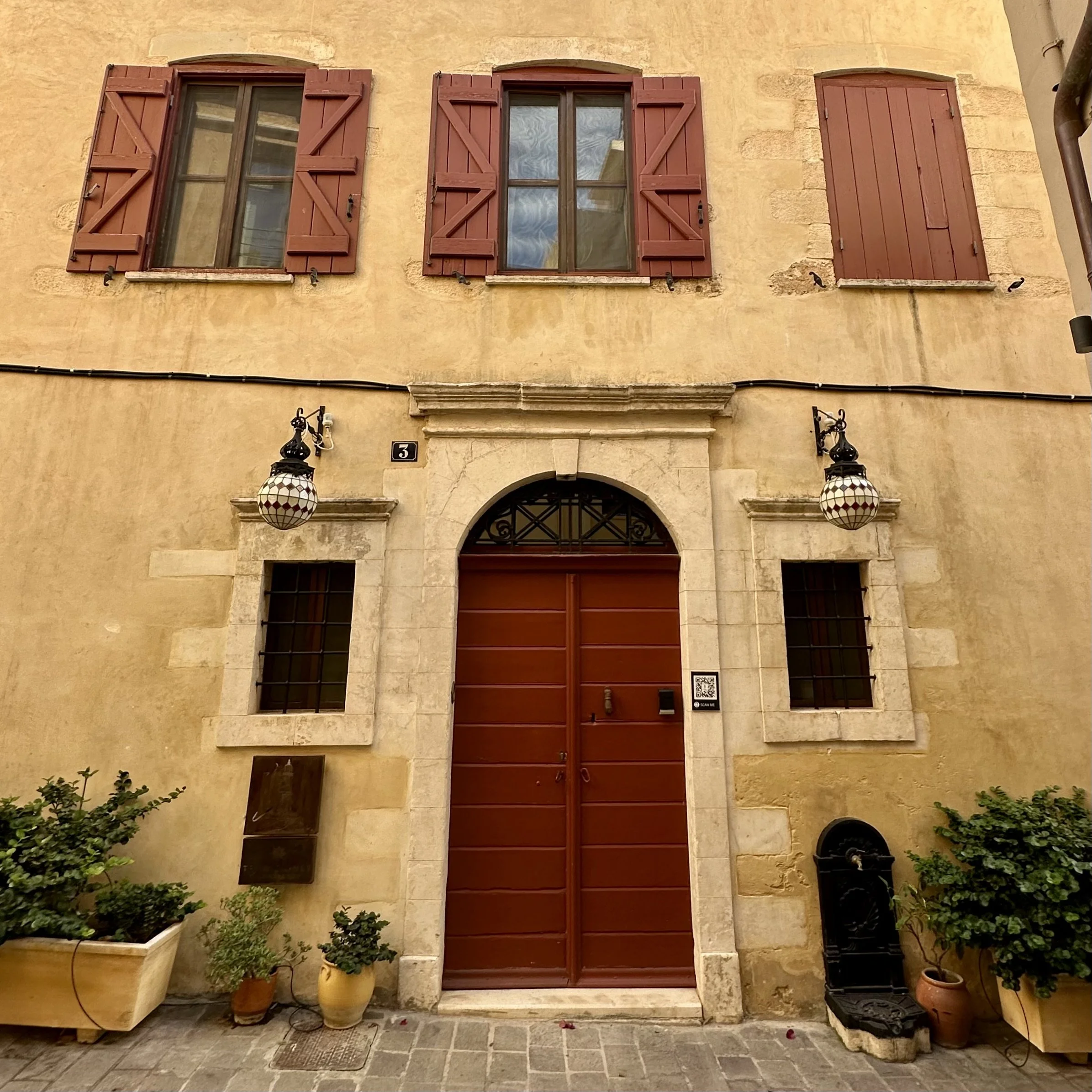
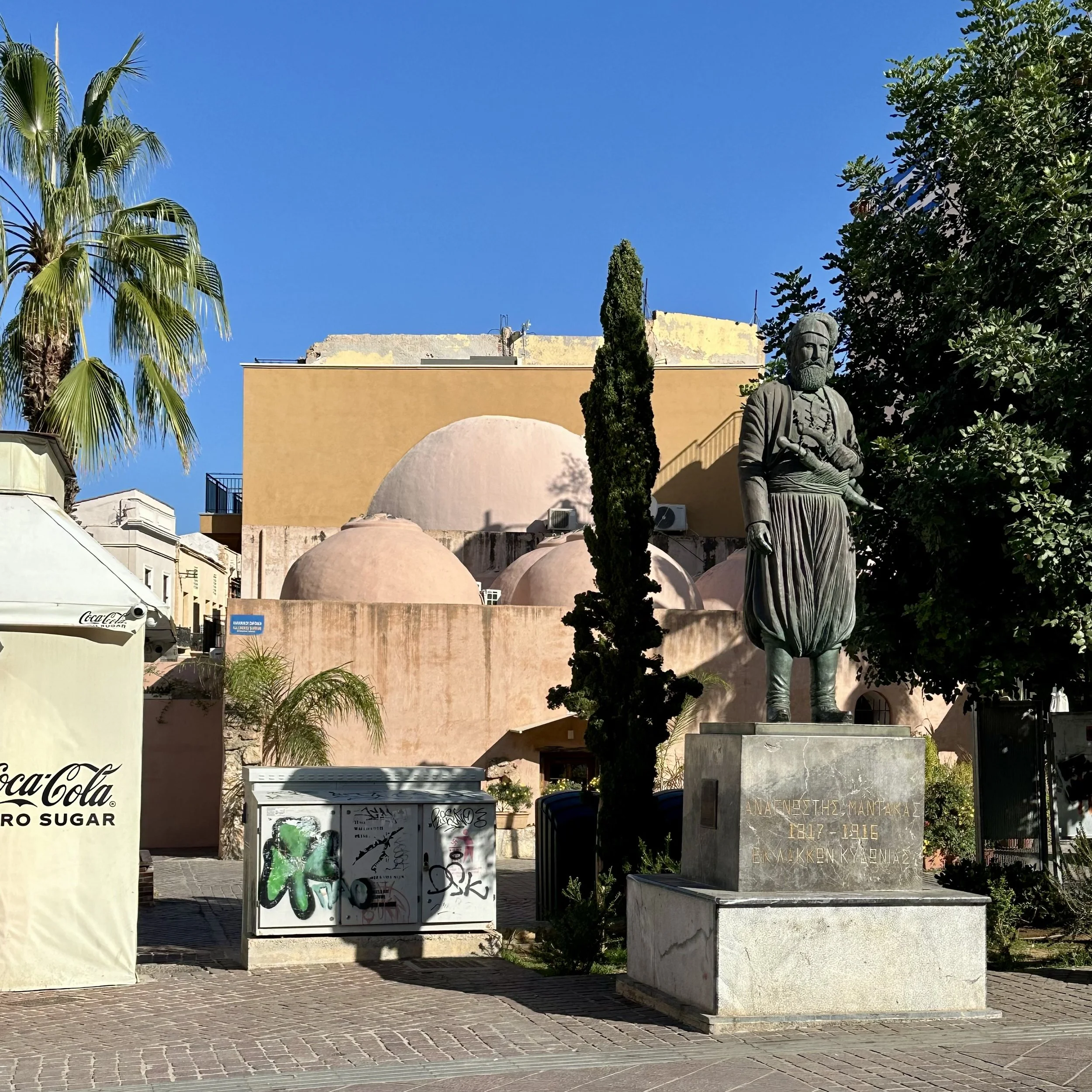

There were many houses in Splantzia that were abandoned, in varying stages of ruin. Iosif explained that many owners simply cannot afford to rebuild. Those inheriting property from an ancestor are required to pay decades of accumulated back taxes. If they do have enough funds to proceed with restoration, they are required to use the same original materials - even if, say, the stones had come from a quarry in Italy. This is prohibitively expensive and can add years to the construction time line! We noticed that the restored houses often had beautifully plastered exterior walls, with the old stones left exposed on the corners to show that they had complied with rules. Iosif said that all the restored houses are now Airbnbs.


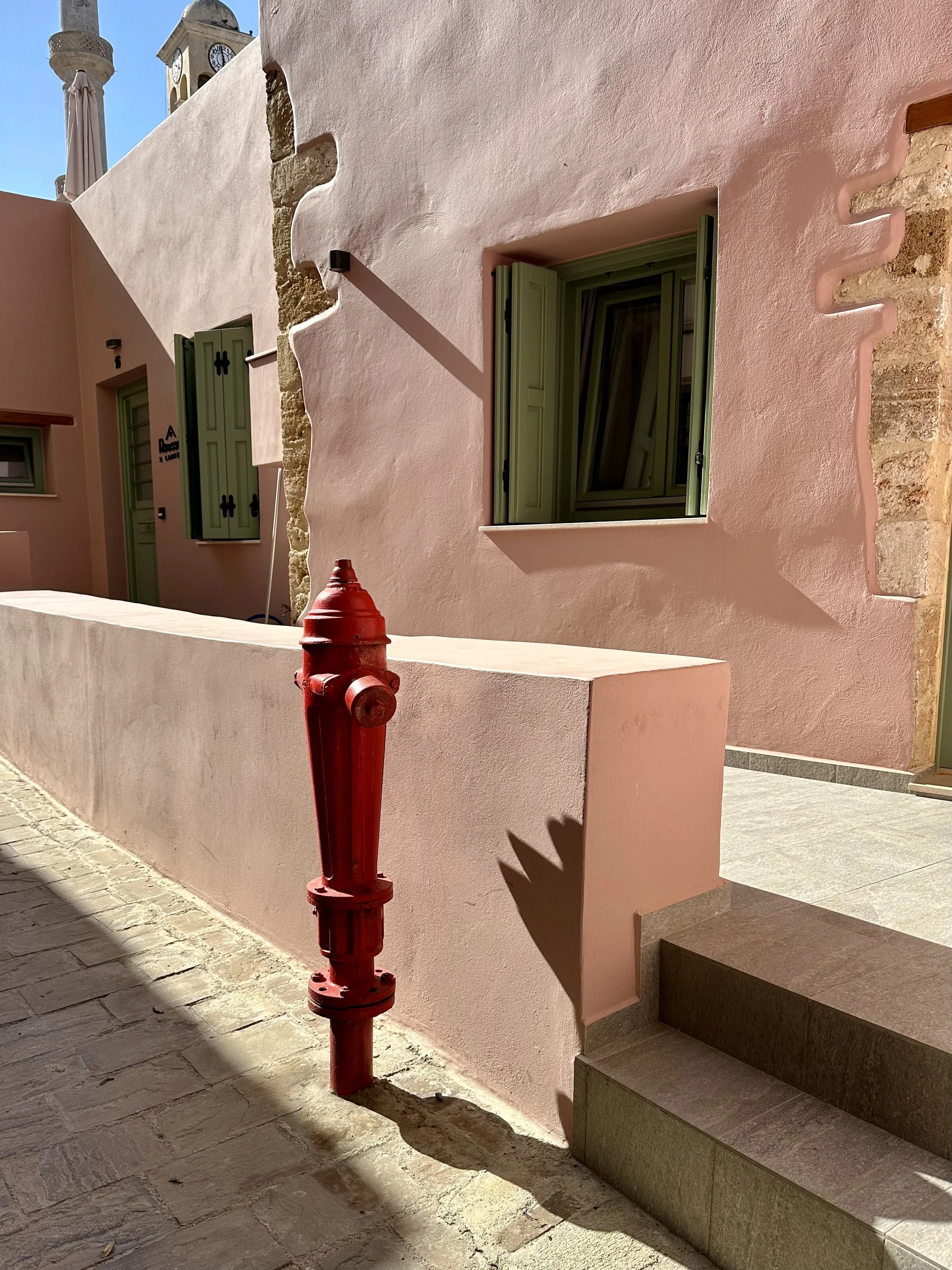
Today, Splantzia is the city’s bohemian district, with its eclectic mix of colorful houses - renovated and decrepit - and protest graffiti. Its restaurants, cafes, and clubs are popular with locals. Daliani Street, with its minaret, is known for its Italian restaurants. Splantzia Square has Agios Nikolaos Church, with both a bell tower and a minaret, and the huge plane tree where Greek revolutionaries were hanged by the Ottomans. Now the tree provides shade for the outdoor tables of a restaurant called Kouzina.
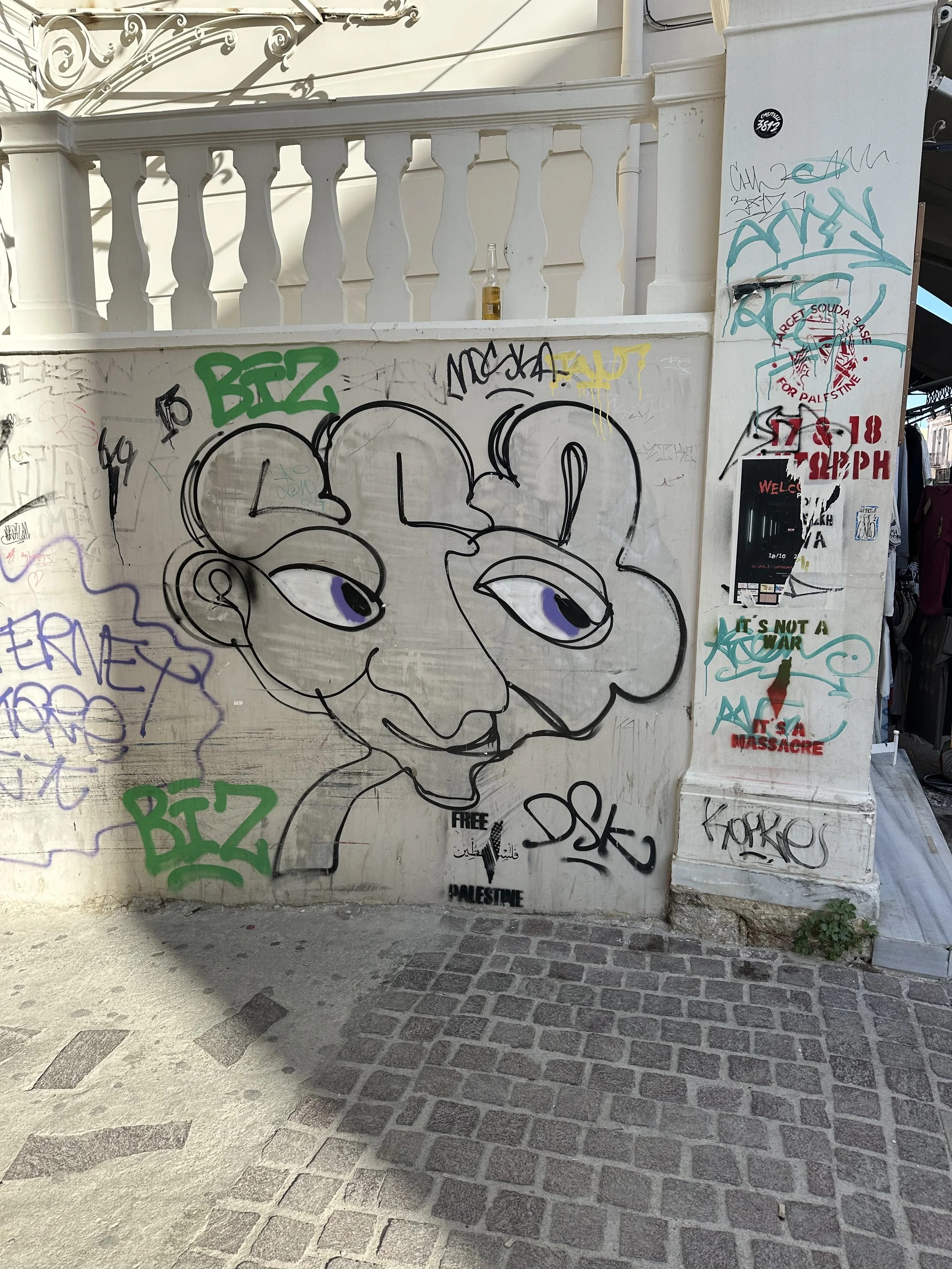
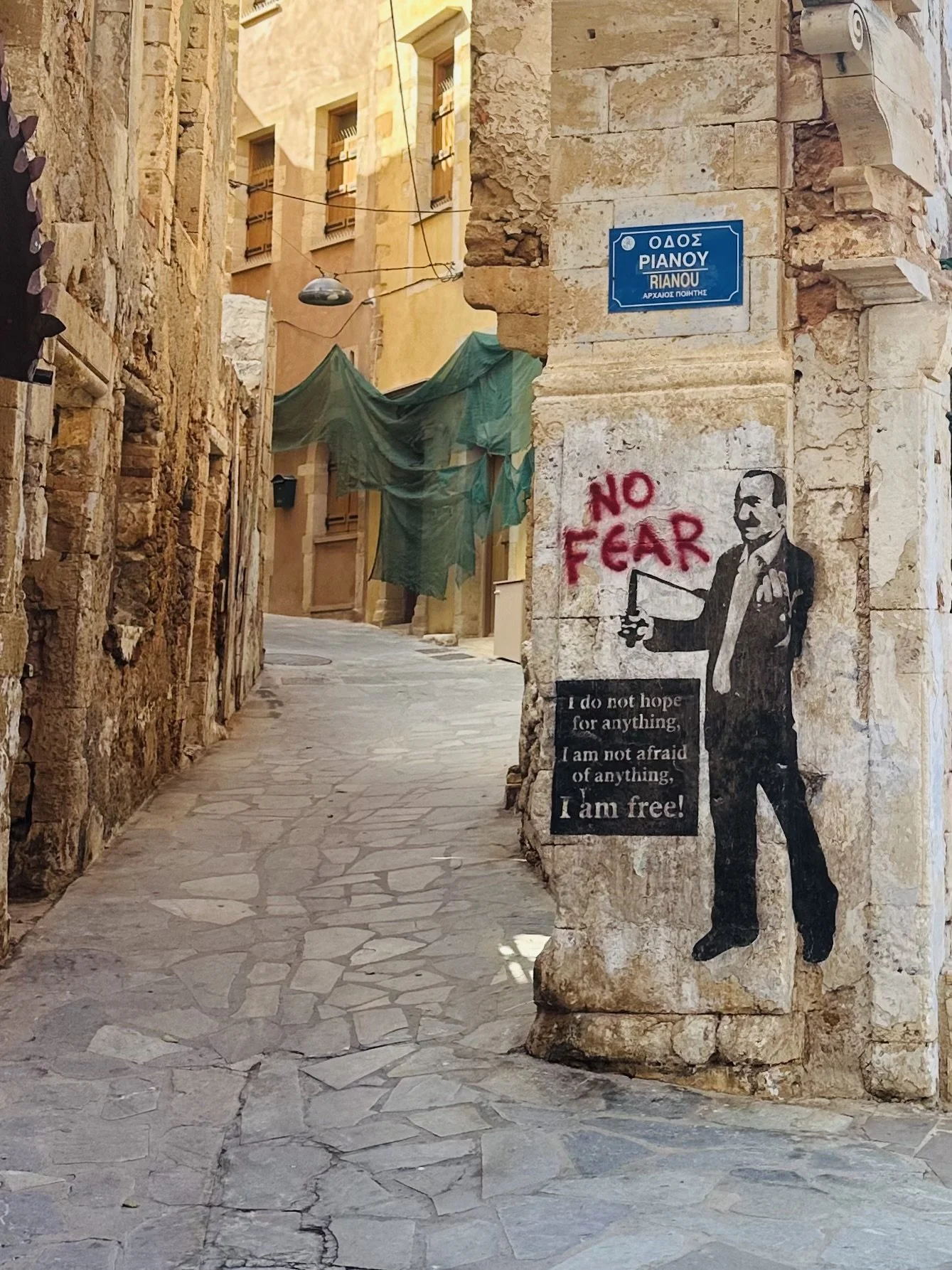



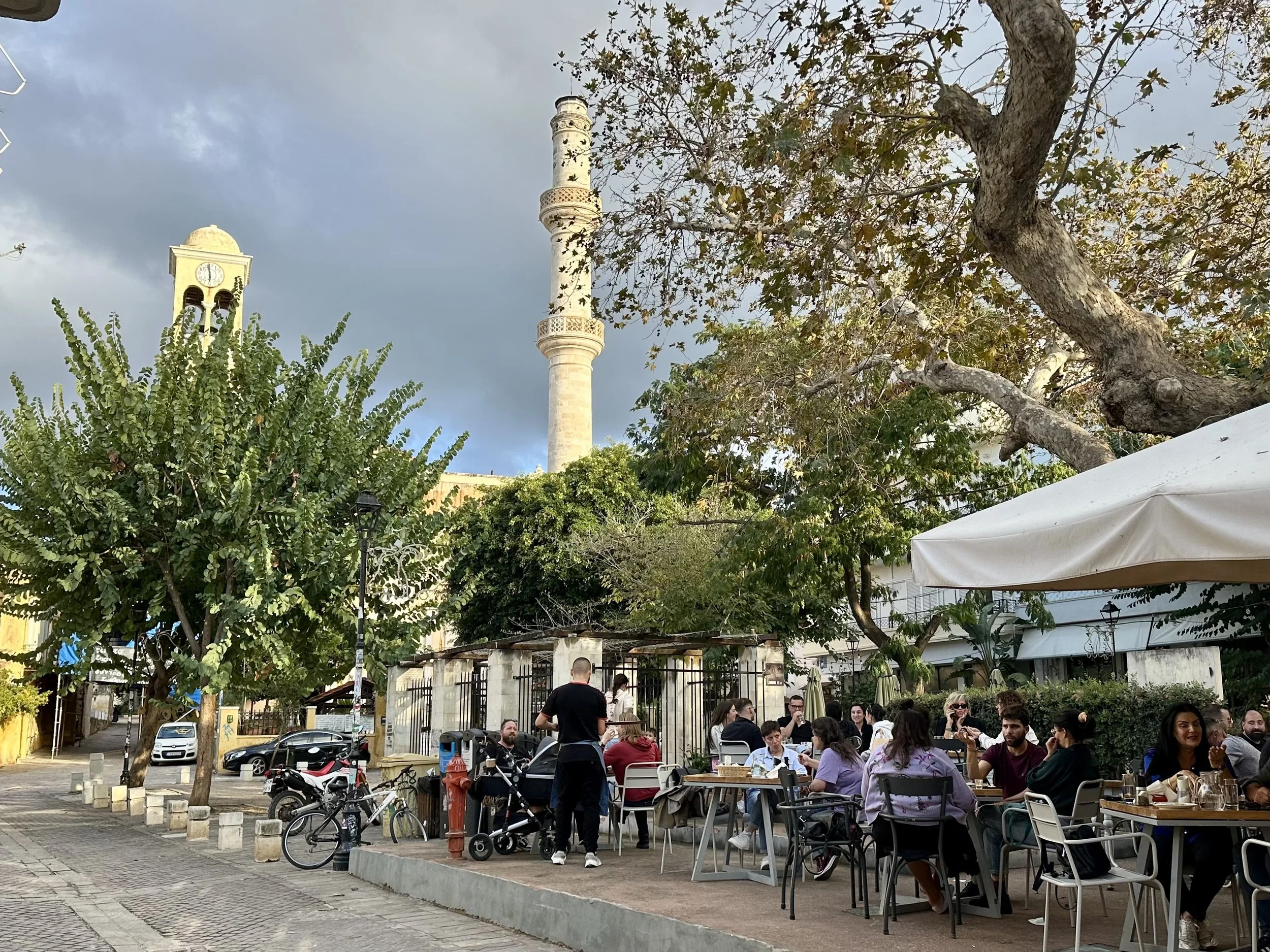
Koum Kapí
At the eastern Venetian wall bordering Old Town, we walked through an opening called Sabbionara (which, like Koum Kapí, means “Gate of the Sand”). The bastion still had the Venetian coat of arms with the winged lion of Saint Mark. From here, a promenade along the gulf led to a small beach. It was hard to believe that this vibrant neighborhood had once been the tent village of the North African Bedouins who provided manual labor for the Ottomans. Now the promenade bustled with restaurants and cafes. At the end of our tour, we sat with Iosif at a seaside table and enjoyed a glass of Charma (a lager brewed in Chania). Around us, locals relaxed with their drinks or played backgammon. At night, Iosif told us, locals enjoy having dinner here with their friends (usually around 10:00pm).
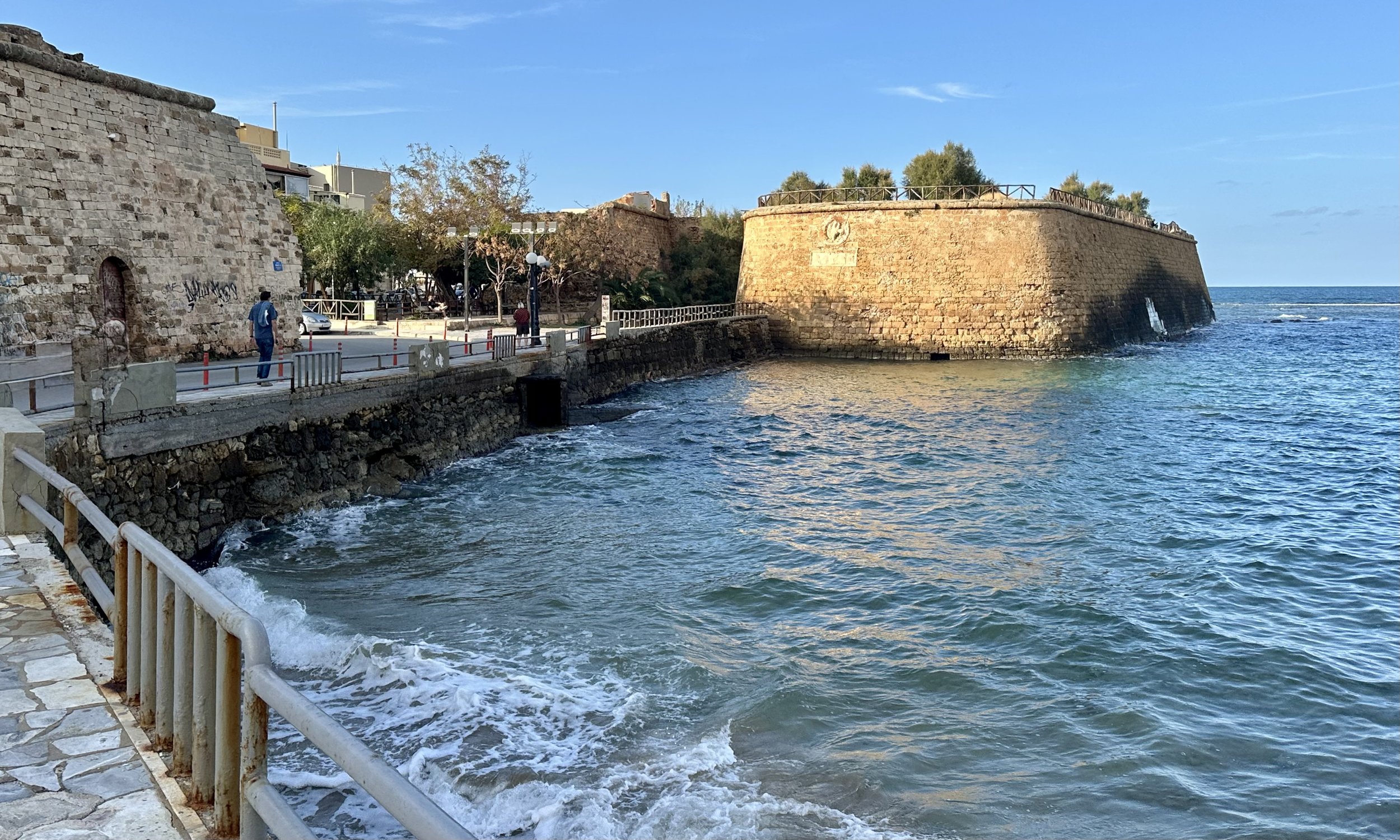
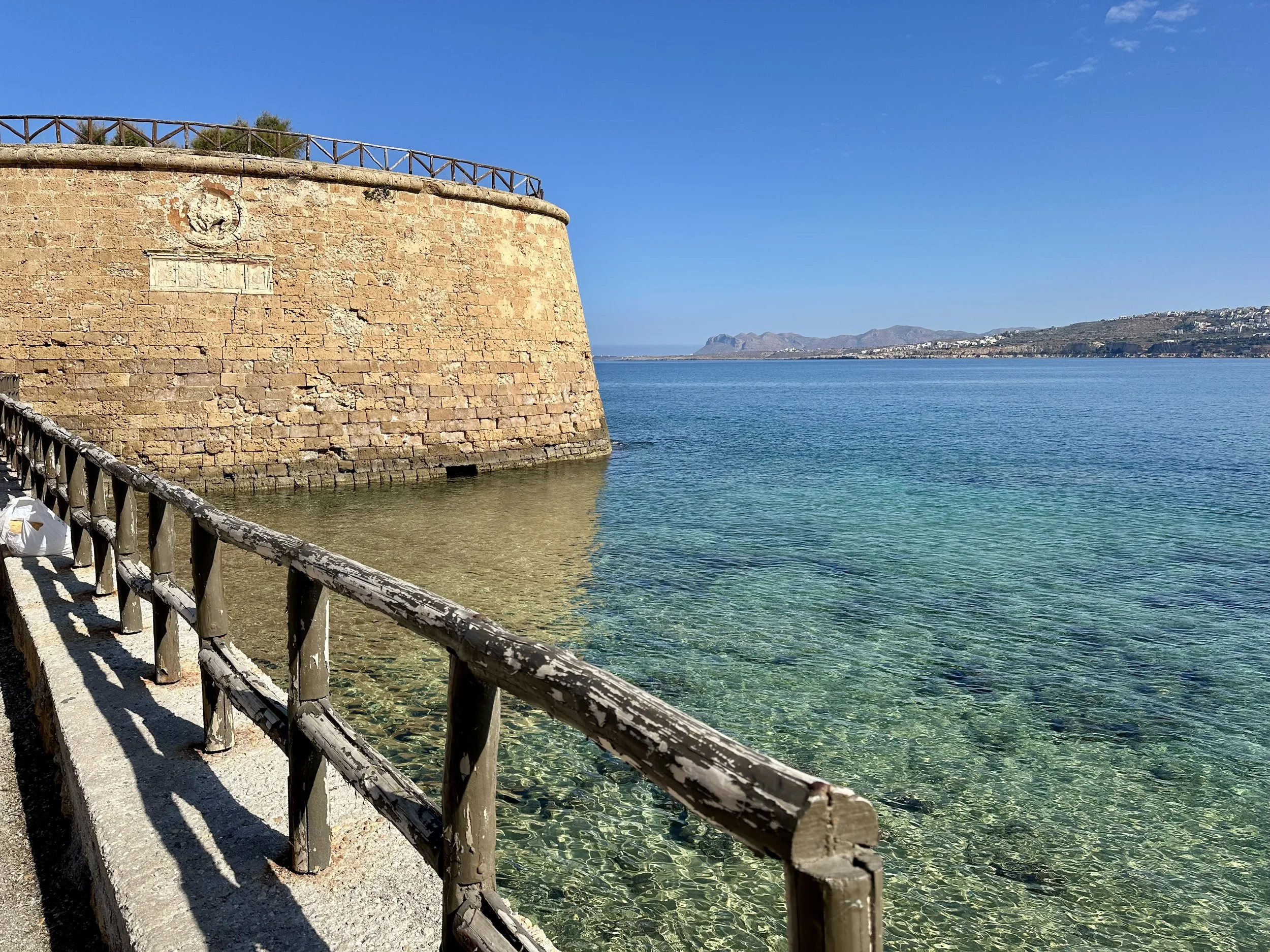
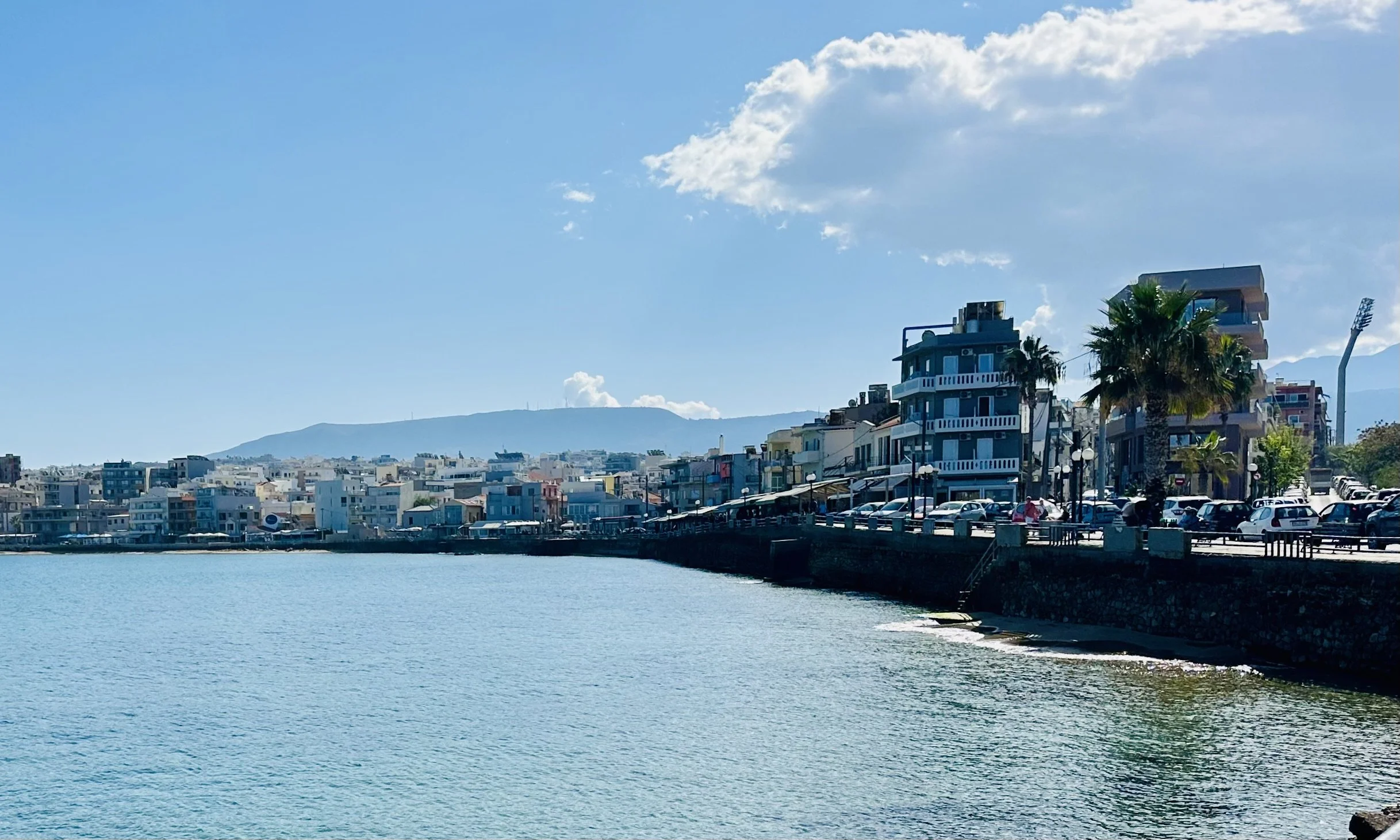
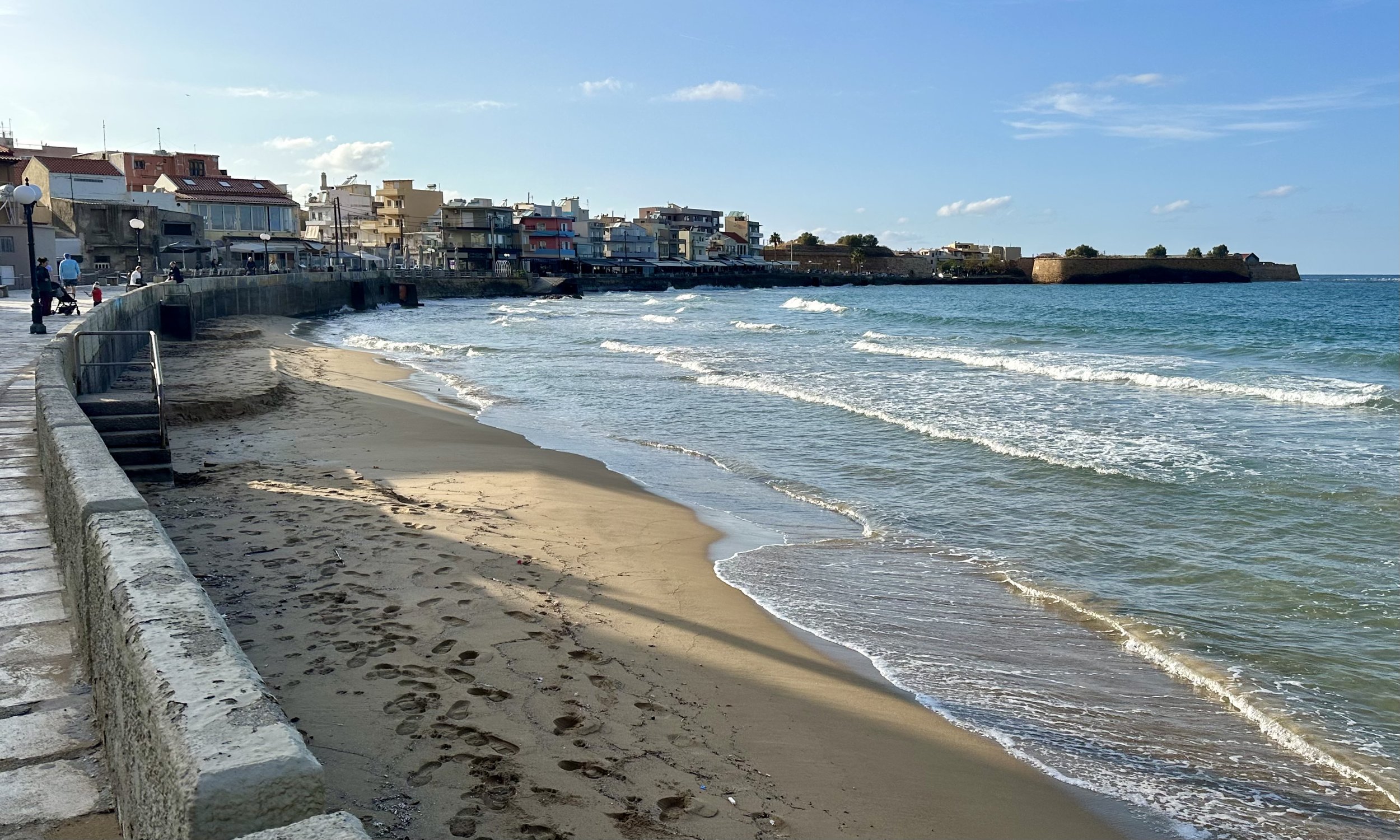
We talked with Iosif about Greece’s progress since the financial crisis of 2008. Around a million skilled workers aged 25-44 have left Greece for better opportunities abroad. This was a devastating brain drain for a country with a population of 10 million. For Iosif, this meant his six closest friends now live in faraway countries. And life is still very hard for those who remained in or returned to Greece. Many, like Iosif, must work four or five jobs to get by. It was a bleak picture quite different from the articles I had read about Greece’s “remarkable” economic recovery. But like George, our driver in Santorini, Iosif had plans. With the tourist season over, Iosif was planning to stage a play.
After the tour, Steve and I walked back to Splatzia Square for lunch at Kouzina. We ran into Francesca, a young woman from our tour group, and invited her to join us. She was a pediatric nurse from Germany, vacationing solo after a break-up. Lunch was delicious, and we enjoyed hearing about Francesca’s adventures in Crete. Kouzina became one of our favorite restaurants in Chania.
